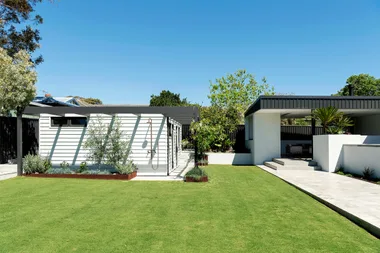The heart of the home is making a move and it’s headed outside. It’s no secret that Australians have an affinity for the outdoors, and now our homes are evolving to follow suit. This means alfresco ideas are front-of-mind when renovating. “Outdoor spaces have developed into extensions of the home, becoming more inclusive than ever before. These spaces are extremely versatile and can quickly convert from being intimate to a space of entertainment,” says Russell Crosdale, BBQ and outdoor culinary expert at Winning Appliances. With warmer weather upon us, there’s no better time to create an outdoor entertaining area to relax and entertain in the comfort of our own surroundings. Here are all the backyard ideas you need to plan an alfresco oasis that can be enjoyed all year round.
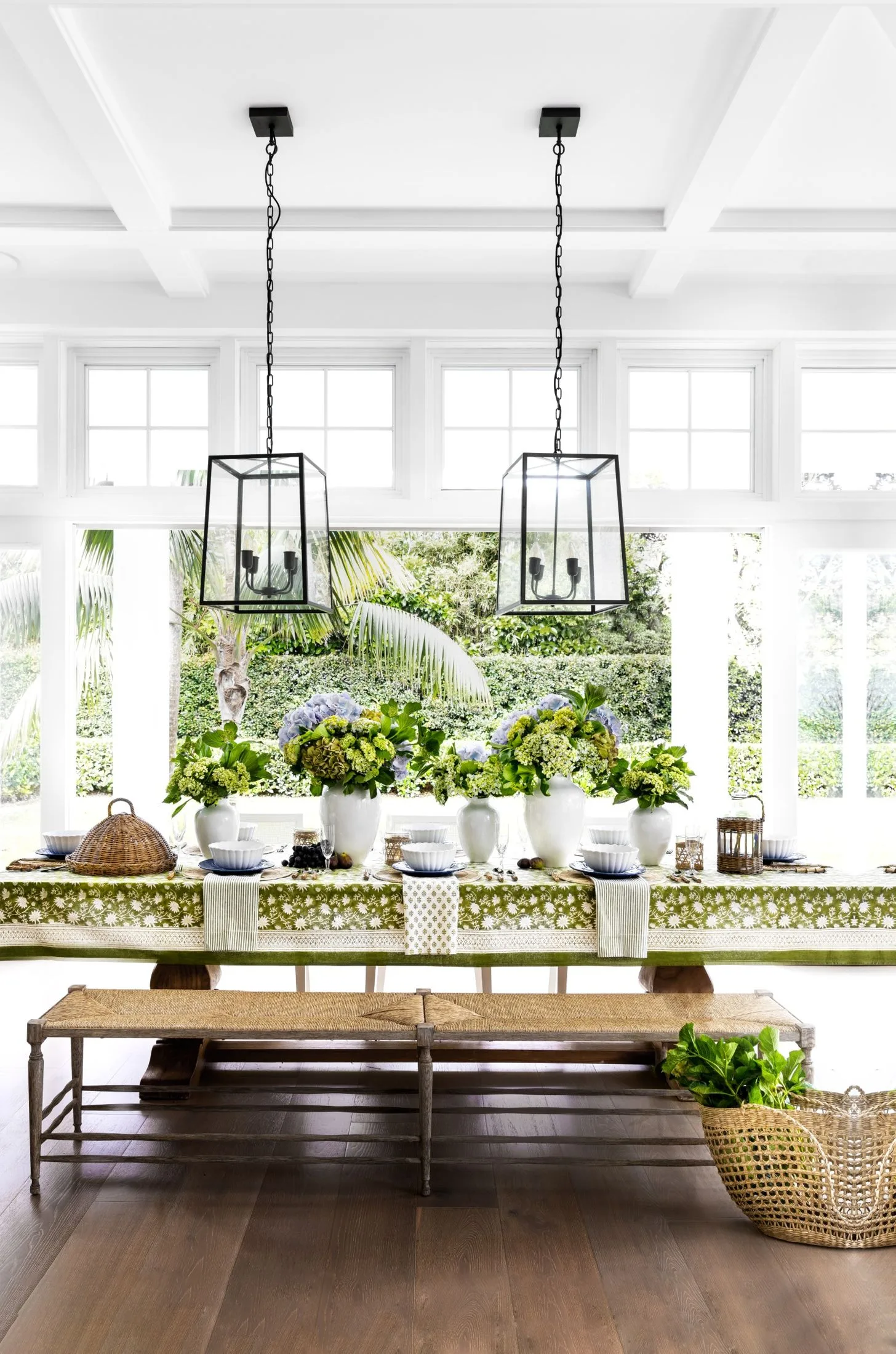
Planning your outdoor area
The first step to success in any renovation is careful planning, and the outdoor entertaining area is no exception. “In terms of budget, planning and execution, the outdoor living space should have the same time and considerations applied to it as the indoor,” says Matt Leacy, landscape designer and co-founder of Landart. Size and budget are the obvious starting points, but you’ll also need to determine exactly how you intend to use the space. “For example, do you want it to be an outdoor kitchen and dining, lounging, or you may want all of the above,” says Matt. “These elements are going to dictate the size and layout of the area you are wanting to transform.”
“Consider how the space might complement your lifestyle, how you intend to use it, and the flow both inside and out.”
Anthony Wyer, Wyer & Co
3 things to keep in mind when planning an outdoor area
Connection “You can create the most amazing outdoor space, however, if there’s no natural flow to it, or a strong enough visual connection, then you may have wasted your time and money,” says Matt.
Aspect “Ensure that the proposed location of the living area has a good aspect. Taking into account where the sun is in the middle of winter and summer is really important … also take note of where the prevailing winds come from. If you get this wrong, that might also rule out sitting in your space at certain times of the year,” says Matt.
Garden “The garden can be used to create intimacy, wind breaks, striking visuals, and to provide an overall sense of wellbeing by introducing the scent of flowers and the sounds of birds,” says Matt.
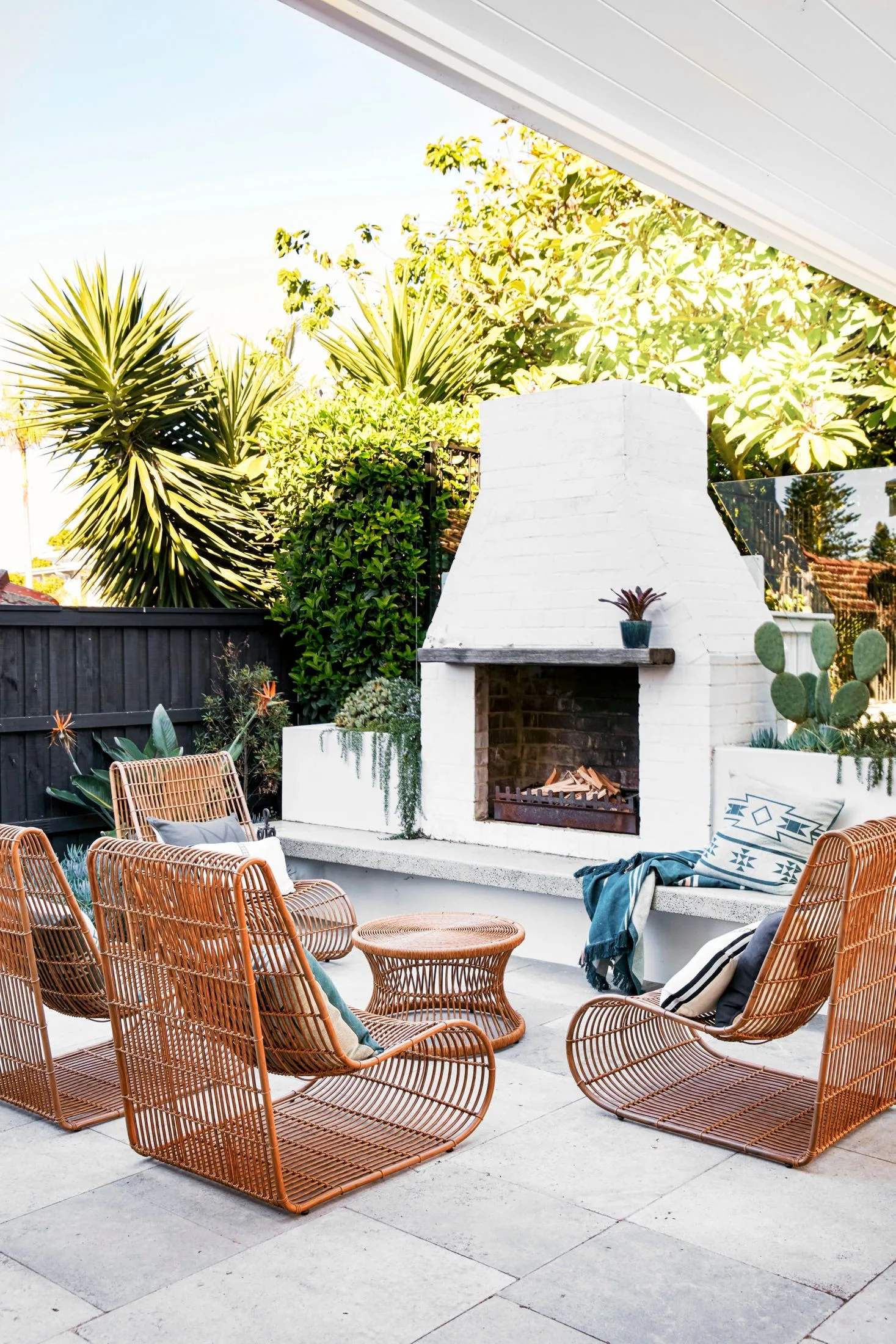
How do I choose the right furniture for my outdoor space?
From designer dining settings to weather-resistant lounge suites, outdoor furniture has come a long way. “Go with whatever will look best and suit the space and design aesthetic you’re going for – for sleek and modern, use powder-coated steel and aluminium. If it is more of a relaxed, coastal vibe, look at natural timbers or something woven,” suggests Matt. Hardwoods such as teak, merbau, treated pink and red gum, are among the most commonly used for their durability, while resin wicker is a more durable choice than natural wicker for woven furniture. “Then look at how exposed the pieces will be to the elements and therefore how durable they will need to be,” he says. For staple items, such as an outdoor sofa and dining table, invest in the best quality you can. “It will generally save in the long run by not having to replace them as quickly – which is also great for reducing landfill,” adds Matt.
“With cushions and fabrics, opt for pieces that are fade- and water-resistant, and made for the Australian climate.”
Matt Leacy, Landart
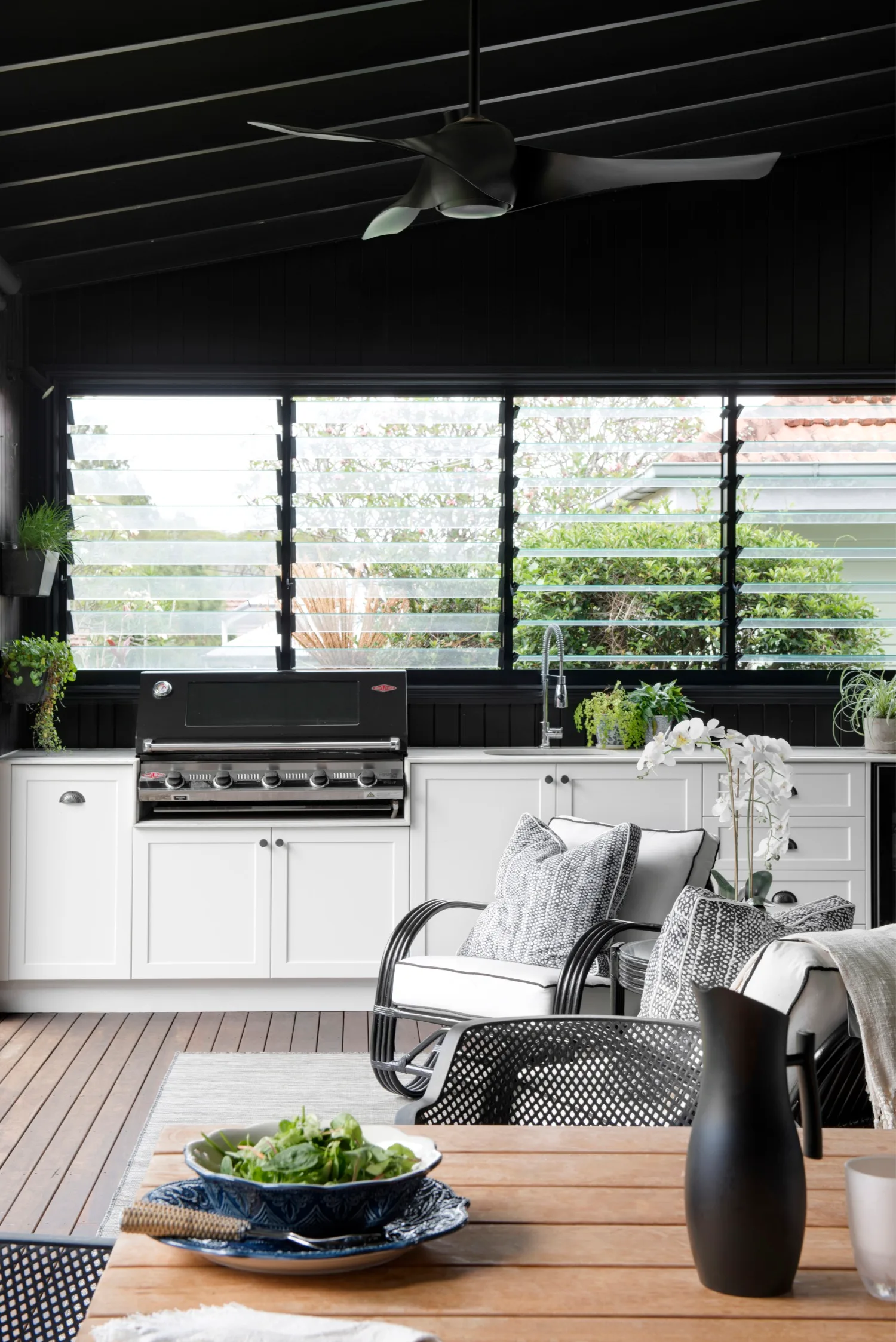
What are the best materials for outdoor flooring?
Balance practical with prettiness when choosing materials and surfaces for your outdoor space – the aesthetic of the space is important for an alfresco oasis, but it will need to withstand the elements, too. These are the pros and cons of the main material options for outdoor flooring:
Concrete This is a versatile, low-maintenance and durable option perfect for the dinner-party hosts who entertain often and dine outside. It can be expensive to install well, prone to cracking if it’s poorly poured and isn’t the most child-friendly option given slip factor and hardness.
Tiles Available in natural or porcelain, outdoor tiles are stylish and practical and come in a variety of shapes, colours and sizes. Crazy paving is a very popular option. Tiles are generally low maintenance and easy to clean, and natural options, such as limestone, keep their cool in hot weather.
Paving Brick paving is a timeless choice and one of the most enduring options, but installation can take longer than other options and weed control will need to become part of the maintenance routine.
Decking Timber decking is a long-time favourite and can be budget friendly with a low-carbon footprint, but it’s high maintenance and requires regular cleaning, resealing and painting. It is also more likely to be damaged by weather. Composite decking is made from a mix of wood fibre and plastics, and creates a similar aesthetic with less maintenance and greater durability. It’s often more expensive than traditional timber and can sag and buckle.

What do I need in my outdoor kitchen?
While kitchens of any kind need to be hardy, the outdoor cook zone has a lot to stand up to. Bench space is crucial for food prep and serving, but you’ll need a benchtop that’s up to the task. “Make sure your benchtops and furniture are resistant to damage from rain and humidity. In coastal areas, choose materials resistant to salt and water – and choose materials specifically designed for the Australian outdoors and exposure to the sun,” says Linda Hannah, Caesarstone Asia Pacific general manager of marketing. Engineered quartz, such as the Caesarstone Outdoor Collection, is a highly durable surface. For a natural stone, opt for something non-porous such as granite and bluestone, but be sure to seal it to reduce stains. Stainless steel is a hard-wearing and budget-friendly option, though it can be hard to keep clean (hello, fingerprints), while concrete is another low-maintenance choice.
“The best materials are durable, UV and weather resistant, and stylish.”
Linda Hannah, Caesarstone
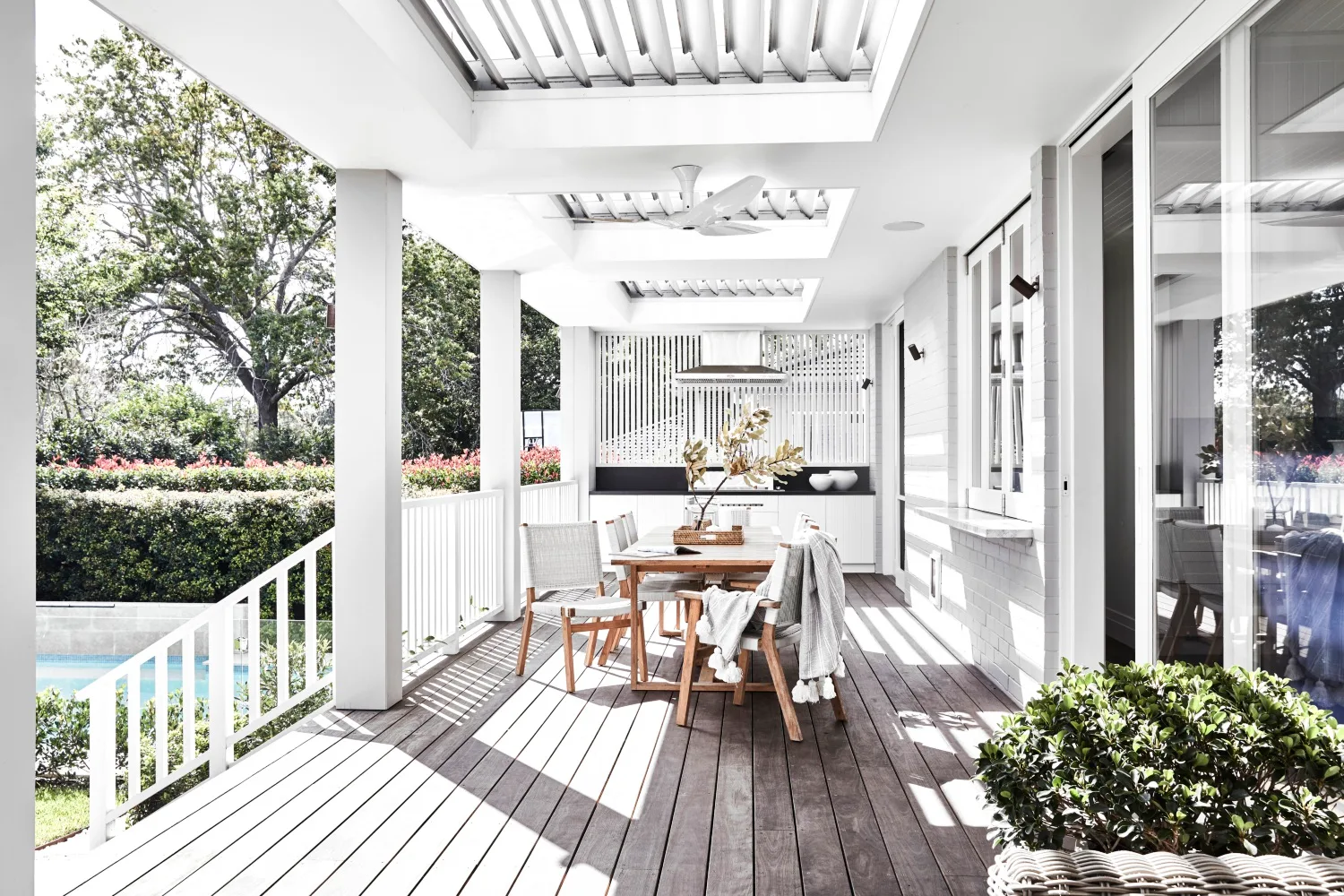
What are the best outdoor kitchen appliances?
Alfresco cooking has evolved from a humble barbecue to fully equipped outdoor kitchens with Bluetooth-enabled appliances. “With constant advancements in technology, outdoor spaces have become extremely innovative … we are seeing more people install ‘traditional’ kitchen appliances outdoors, such as dishwashers, fridges, sinks, and taps,” says Russell. “When shopping for appliances for your outdoor space, the most important thing to consider is the product’s materials – materials such as marine-grade stainless-steel appliances can help the longevity of the product, which is especially important for those living by the ocean. However, certain products must not be used outdoors, as they can become damaged, rusted, or weathered.” Most outdoor appliances will still require some shelter and protection, but the space also needs to be well ventilated for cooktops and some heaters. “If your outdoor space is enclosed and lacks ventilation, you may want to consider purchasing an exhaust hood,” says Russell. Don’t forget to consider the energy source of your cooking appliances and whether you’ll require an electrical output or natural gas connection.
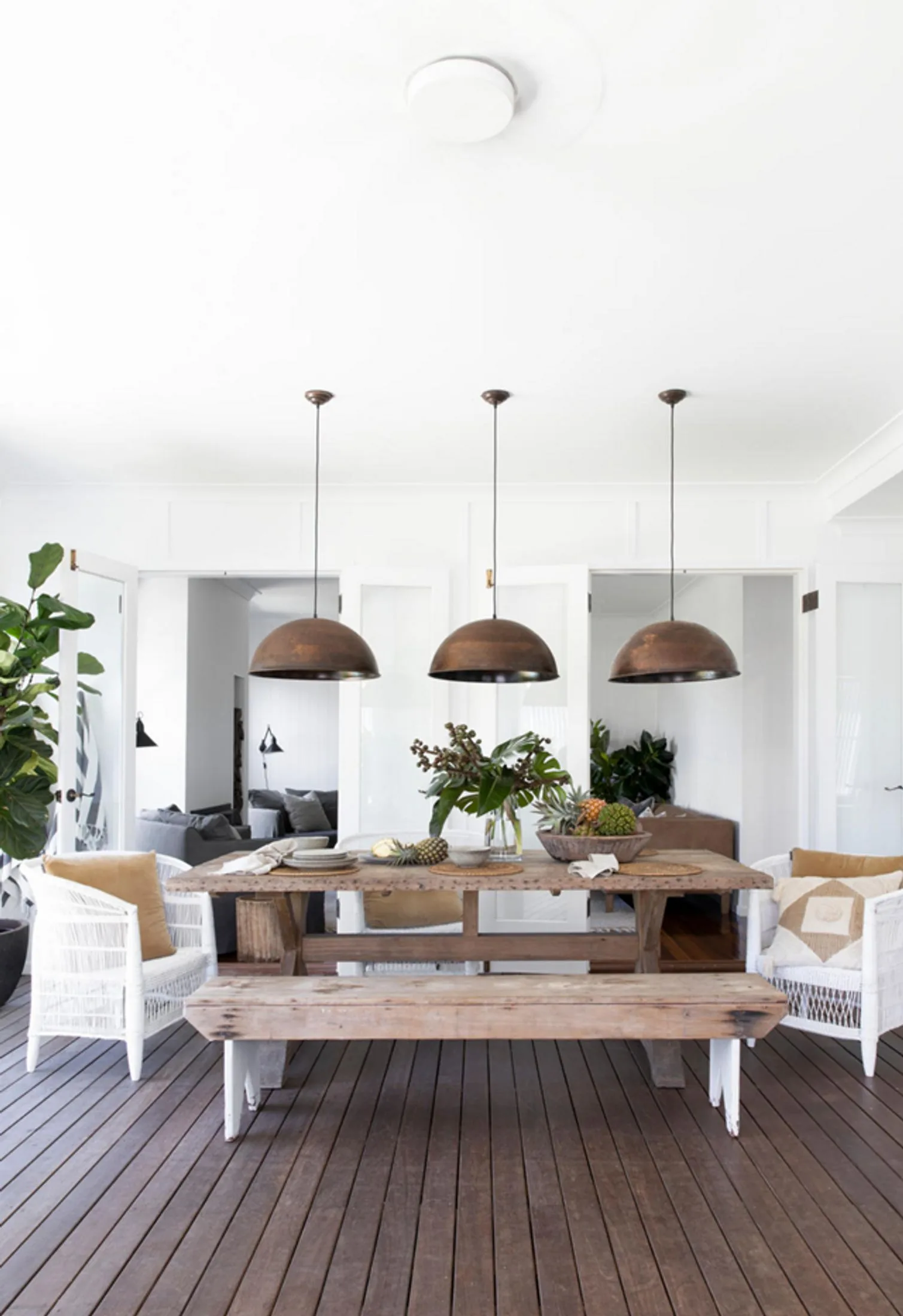
Why is lighting so important in an alfresco entertaining area?
“Lighting is everything,” says Matt. “I can’t emphasise that enough. It is one of my favourite parts of a successful outdoor design and it has become that way for many of our clients, too.” A layered lighting plan is essential – for practicality’s sake as well as ambience and atmosphere. A general, overhead light source is the first step, but you’ll want to incorporate task lighting for food prep and cooking areas as well as ambient lighting to help set the mood when the cooking is complete and it’s time to relax. “Ceiling lights and fans can all be installed as part of the final finishing touches of your outdoor space, but the provisions for these have to be installed earlier,” warns Matt. At the planning stage, map out your main ceiling lights, ceiling fans to keep the space cool in summer, and some downlights over the cooking zone. Outdoor floor lamps can be a handy addition for retrospectively introducing ambient lighting, while feature lights in the garden can make a design statement. “Look to illuminate the key features of your landscape. This could be a striking tree, running waterfall, pool area or pathway, sculpture or artwork,” says Matt.
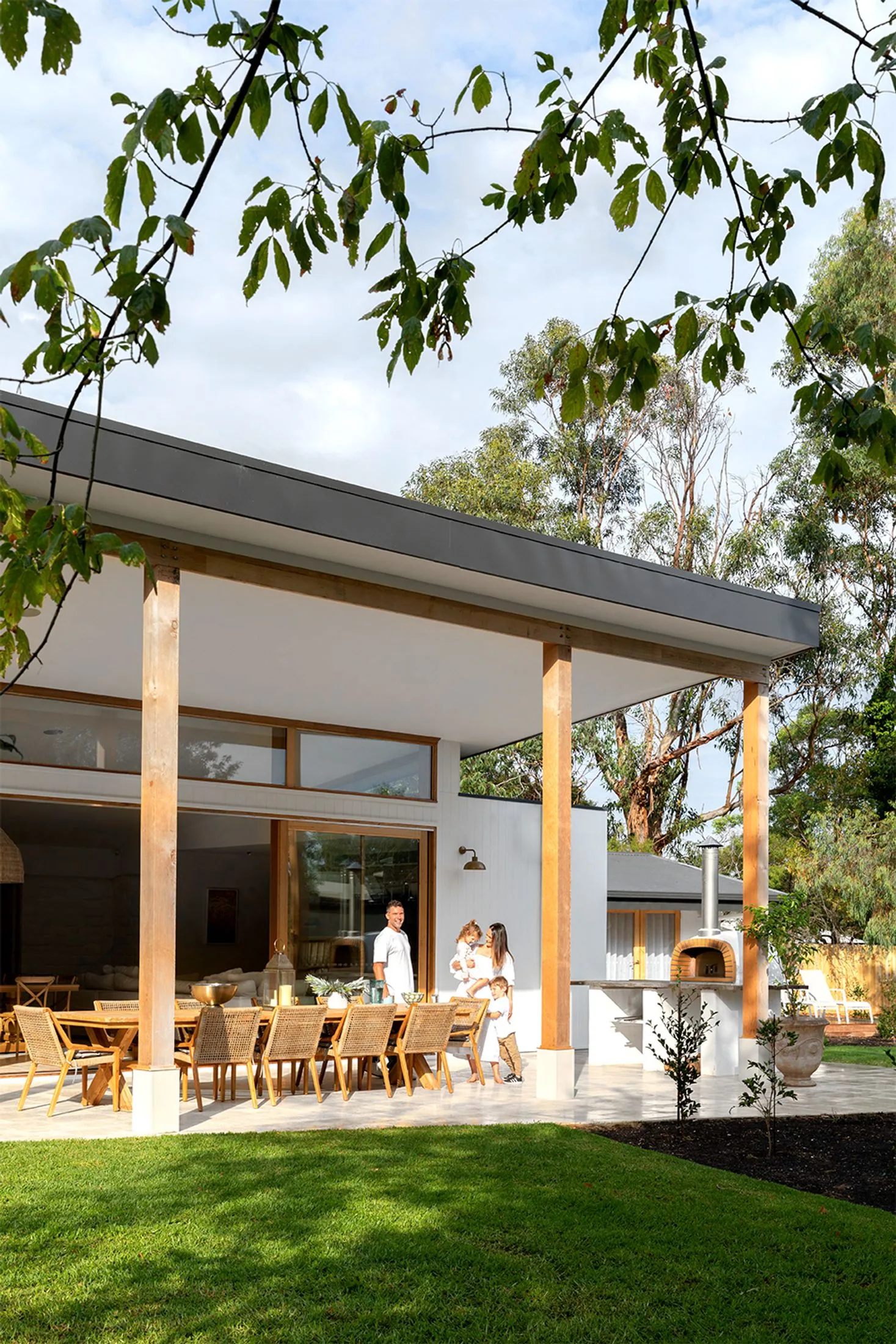
What are some shade ideas for an outdoor area?
Transforming your outdoor space into a seamless extension of your interiors could be as simple as installing awnings and outdoor blinds. “Consider awnings for functional entertaining areas of the garden where it is necessary to limit exposure to the elements,” says Anthony Wyer, founder of Wyer & Co. “They will help to delineate zones and create intimacy, ensuring the outdoor space is appropriate and functional year round.” Not only can an awning offer more shade and UV protection for your outdoor space, it reduces the impact of wind and even blocks the sun from reaching your home for more efficient cooling inside. Options range from an outdoor blind with a sun-blocking fabric with a pulley rope system to automated retractable awnings that can double the amount of shade and shelter you have access to.
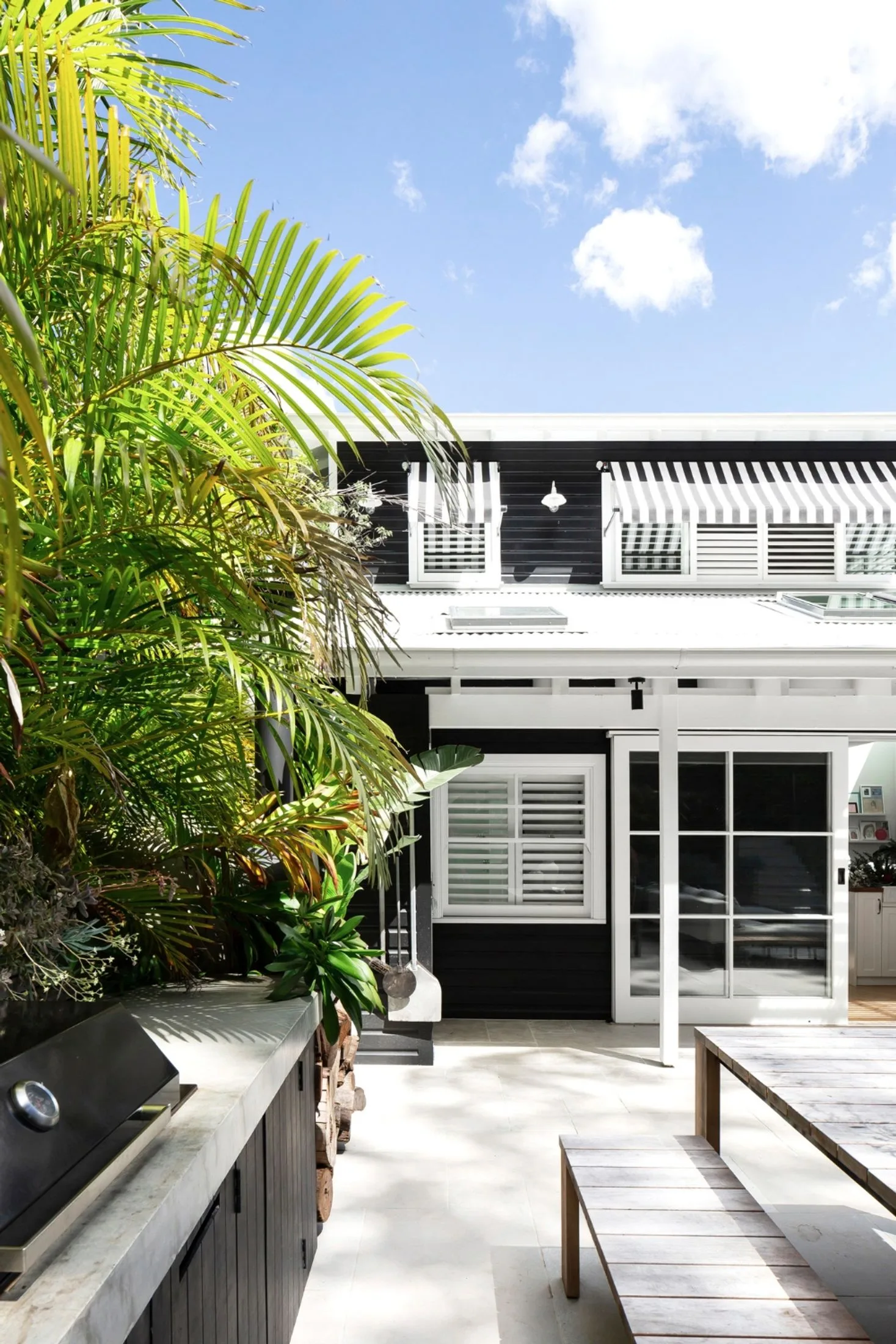
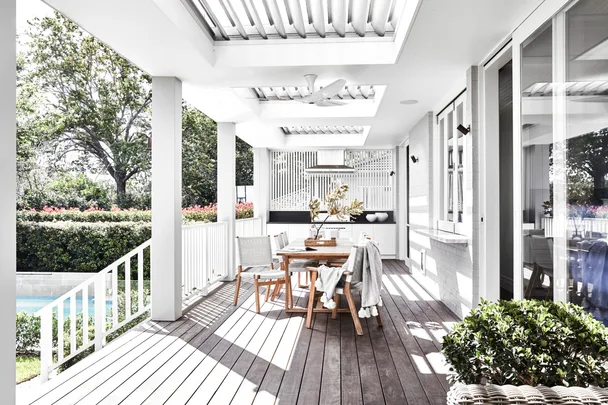 Photography: Kristina Soljo
Photography: Kristina Soljo
